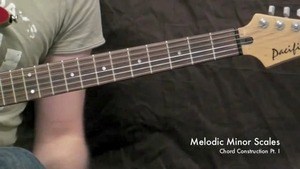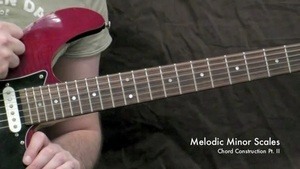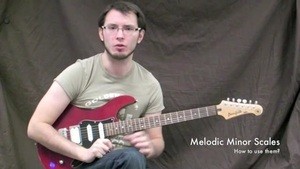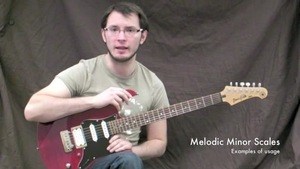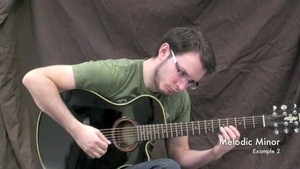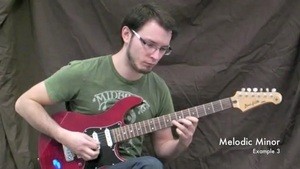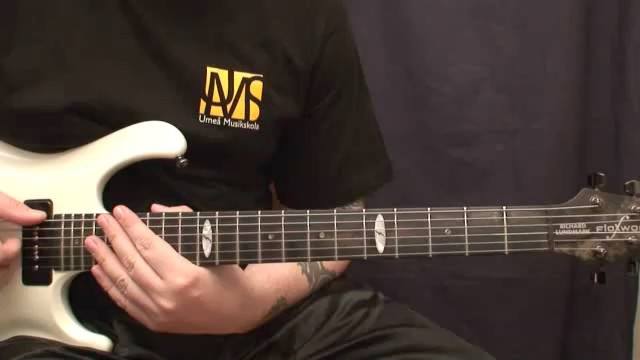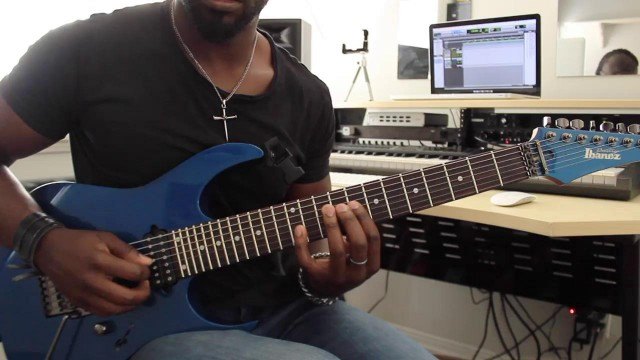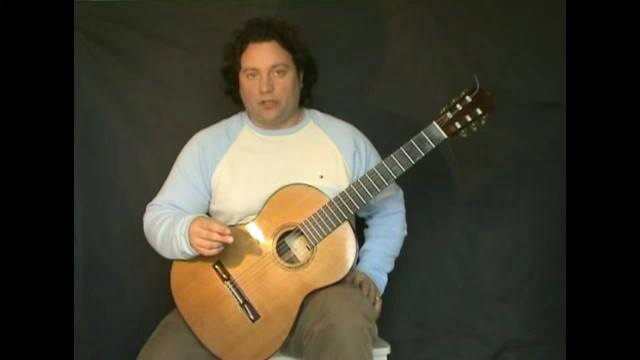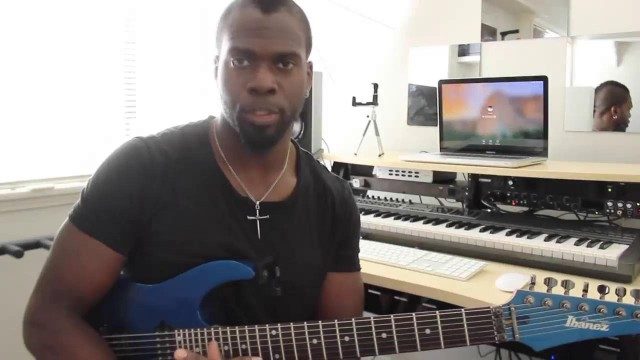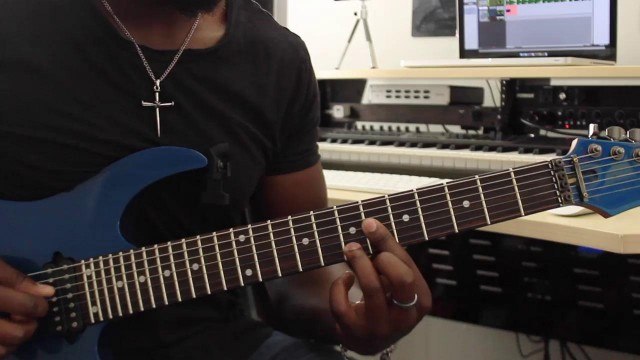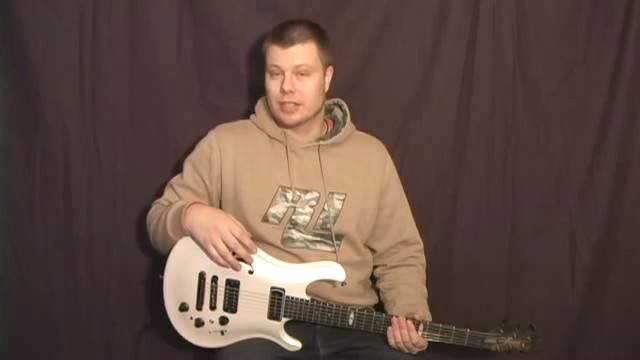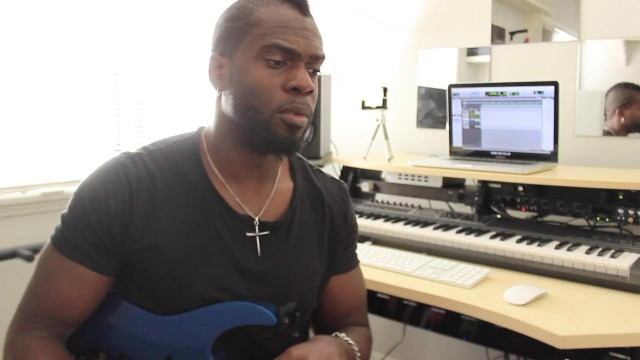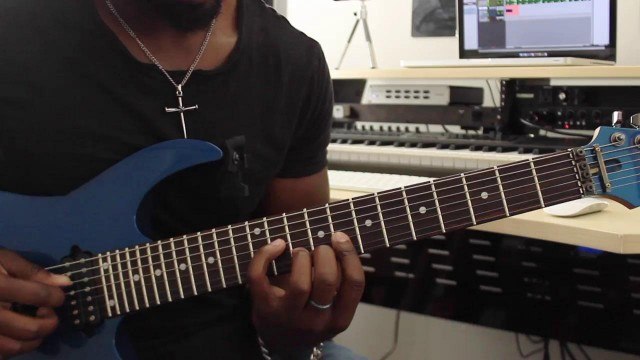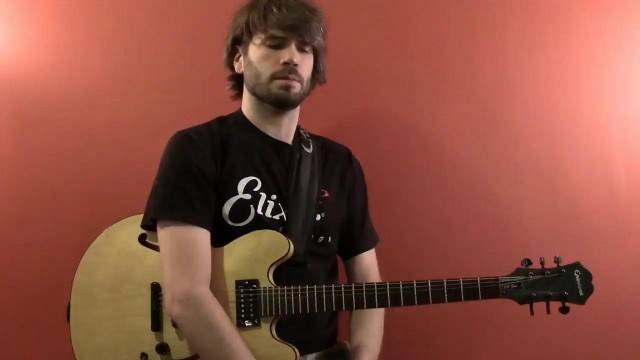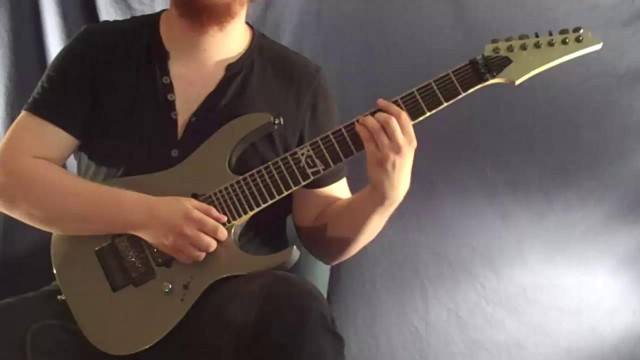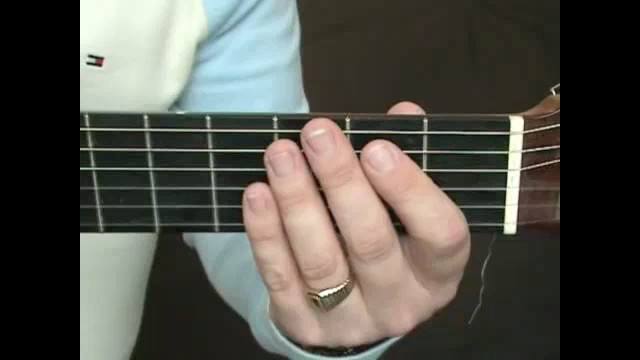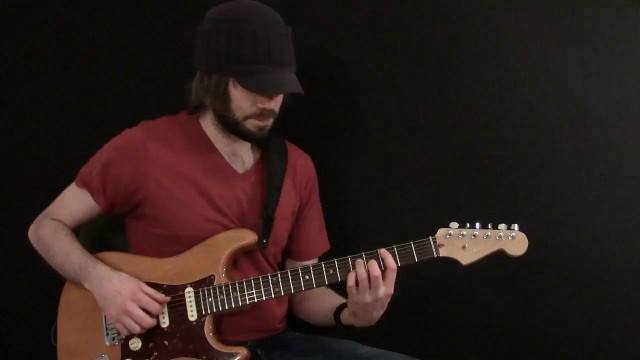Just as when we build the seven chords from a major scale, we can build seven chords from our melodic minor scale.
The first thing I want to say is don't worry if you've never studied chord construction at this stage. A separate tutorial will be coming soon explaining this very important topic, however, for now it's not required knowledge. If you do understand chord construction - GREAT! See if you can work out why these chords have the names they do.
The second thing I want to say before we get started is, don't get scared by these chord names. When you see things such as D7sus4b9 or F13#11 there's no need to panic. The names look complicated but basically the thing to do is associate the name (however complicated) with the shape and sound of the chord. At this stage it isn't necessary to understand why the chords are named the way they are. Again, this is the subject for a chord construction tutorial. If you do have a good understanding of chords and look at some of these shapes thinking 'hang on! Some of those shapes don't contain all the notes in the chord symbol!' again don't worry. What we're doing here is conveying a certain sound via the chord symbol, not necessarily the exact notes in the chord. Things can become a bit vague when we only have six strings! Remember - piano players have up to ten notes available to them at any one time. On a practical level we have at most six and usually we play only four so it's impossible to play these chords and have them contain all the notes needed for the name.
So, without further a do, onto the chords.
The first chord (Chord I) in the key of C melodic minor is called,
Cm∆7 or C minor major 7.
Below are two shapes for this chord, one containing a 9th as well.
Chord II is built from our second note, D and is called.
D7sus4b9 or D seven sus four flat nine.
Again, we have two voicings or shapes for the chord. Remember, don't be put off by the name. Just associate the shape and sound with the name.
Chord III is built from Eb and is called,
Eb∆7#5 or Eb major 7 sharp 5
Two voicings are shown.
Chord IV is built from F, the 4th note of the scale and is called,
F13#11 or F 13 sharp 11 also known as a lydian dominant.
Two voicing are shown.
Bear in mind that I'm playing my shapes in 4ths tuning - the TABS below are in standard tuning so don't worry if your shapes look a little different to mine. Move onto the next video for the remaining three chord shapes.


